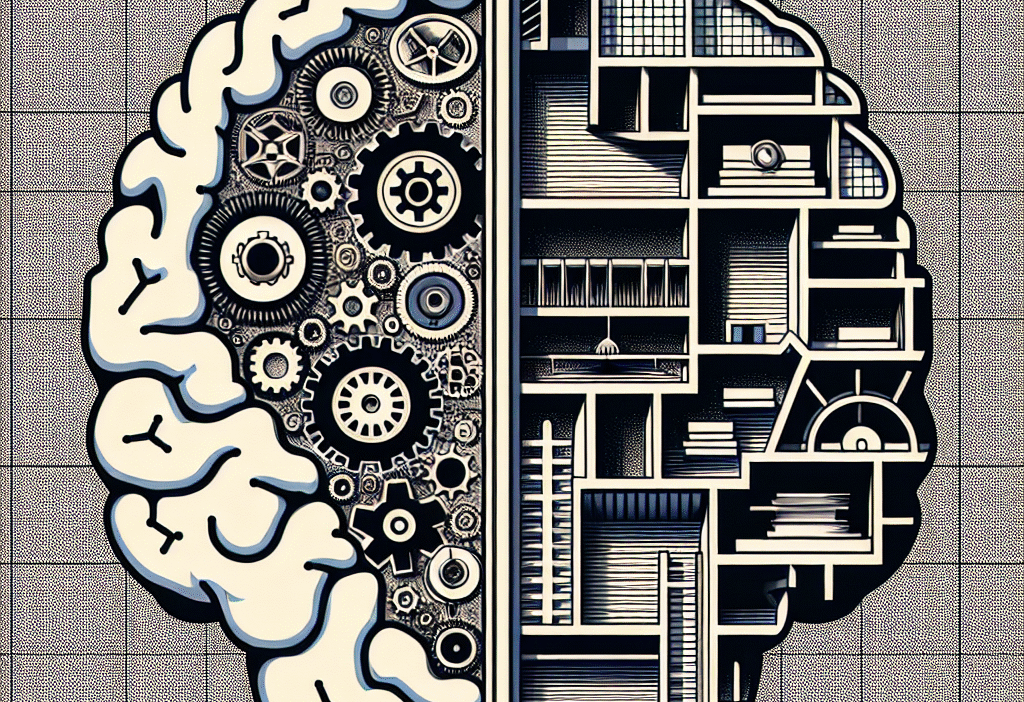Introduction
In the vast landscape of psychological theory, two foundational schools of thought stand out: Functionalism and Structuralism. These paradigms not only shaped the early development of psychology but continue to influence contemporary thought and practice. Understanding these theories is essential for anyone interested in the intricacies of human behavior and mental processes.
In this article, we will delve deep into the core principles of Functionalism and Structuralism, exploring their historical contexts, key figures, and lasting impacts. By the end, you will have a comprehensive understanding of how these two approaches contrast and complement each other, equipping you with insights that can enhance your understanding of psychology.
The Historical Context of Functionalism and Structuralism
The Birth of Psychology
Psychology emerged as a distinct scientific discipline in the late 19th century. Before this, philosophical inquiries into the mind were prevalent, but the advent of experimental methods marked a significant shift.
Structuralism was primarily founded by Wilhelm Wundt, often referred to as the "father of experimental psychology." He established the first psychology laboratory in 1879 at the University of Leipzig, Germany. Wundt’s approach focused on breaking down mental processes into their most basic components, akin to how a chemist analyzes substances.
- Functionalism, on the other hand, arose as a reaction to Structuralism. Influenced by Charles Darwin’s theory of evolution, Functionalism emphasized the purpose of mental processes and behavior in adapting to the environment. Key figures like William James and John Dewey championed this perspective, arguing that understanding the function of consciousness was more important than merely dissecting its structure.
Key Figures in Functionalism and Structuralism
| Theory | Key Figures | Contributions |
|---|---|---|
| Structuralism | Wilhelm Wundt | Established the first psychology lab; introspection. |
| Edward Titchener | Expanded Wundt’s ideas; focused on the structure of consciousness. | |
| Functionalism | William James | Authored "The Principles of Psychology"; emphasized the adaptive nature of consciousness. |
| John Dewey | Advocated for education reform and the application of psychology to social issues. |
Core Principles of Structuralism
Understanding the Structure of Consciousness
Structuralism posits that the mind can be understood by breaking it down into its basic elements. Wundt and Titchener employed a method called introspection, where individuals would report their conscious experiences in response to stimuli. This method aimed to uncover the underlying structures of consciousness.
Key Concepts of Structuralism
- Introspection: A systematic examination of one’s conscious thoughts and feelings.
- Elements of Consciousness: Wundt identified three primary elements: sensations, feelings, and images.
- Psychological Processes: Structuralists believed that understanding these elements would lead to insights about complex mental processes.
Limitations of Structuralism
While Structuralism laid the groundwork for psychological research, it faced criticism for its reliance on introspection, which was seen as subjective and unscientific. Critics argued that it failed to account for the dynamic nature of mental processes and the influence of the environment.
Core Principles of Functionalism
The Purpose of Mental Processes
Functionalism shifts the focus from the structure of the mind to its functions. Influenced by Darwinian principles, Functionalists sought to understand how mental processes help individuals adapt to their environments.
Key Concepts of Functionalism
- Adaptation: Mental processes are viewed as tools for survival and adaptation.
- Holistic Approach: Functionalism considers the mind as a whole, emphasizing the interconnectedness of thoughts, feelings, and behaviors.
- Pragmatism: This philosophy underpins Functionalism, suggesting that the truth of an idea is measured by its practical consequences.
Impact of Functionalism
Functionalism paved the way for various psychological approaches, including behaviorism and applied psychology. By focusing on the practical applications of psychological principles, it encouraged the exploration of real-world issues, such as education, mental health, and social reform.
Functionalism vs. Structuralism: A Comparative Analysis
Methodological Differences
| Aspect | Structuralism | Functionalism |
|---|---|---|
| Focus | Structure of consciousness | Functions of mental processes |
| Methodology | Introspection | Observation and experimentation |
| View of Mind | A collection of elements | A dynamic, adaptive system |
Theoretical Implications
- Structuralism seeks to categorize and analyze the components of the mind, while Functionalism emphasizes the purpose and utility of mental processes.
- Structuralists might ask, "What are the elements of thought?" whereas Functionalists would inquire, "How do these thoughts help us navigate our environment?"
Practical Applications
Functionalism has had a more significant impact on applied psychology, influencing fields such as education, clinical psychology, and organizational behavior. Its focus on real-world applications has made it a more versatile framework compared to Structuralism, which is often viewed as more theoretical.
Visualizing the Theories
Table 1: Key Differences Between Functionalism and Structuralism
| Feature | Functionalism | Structuralism |
|---|---|---|
| Origin | Late 19th century | Late 19th century |
| Key Figures | William James, John Dewey | Wilhelm Wundt, Edward Titchener |
| Focus | Purpose of mental processes | Structure of consciousness |
| Methodology | Experimental and observational | Introspection |
| Legacy | Influenced behaviorism, applied psychology | Largely historical, foundational |
Chart 1: Evolution of Psychological Theories
plaintext
[Structuralism] –> [Functionalism] –> [Behaviorism] –> [Cognitive Psychology]
The Legacy of Functionalism and Structuralism
Lasting Impact on Modern Psychology
Both Functionalism and Structuralism have left indelible marks on the field of psychology. While Structuralism is often viewed as a stepping stone to more dynamic theories, its emphasis on scientific rigor laid the groundwork for future research methodologies.
Functionalism, with its focus on adaptation and practical application, has influenced various branches of psychology, including:
- Behaviorism: Emphasizing observable behavior over internal processes.
- Cognitive Psychology: Exploring mental processes and their functions.
- Educational Psychology: Applying psychological principles to enhance learning.
Integrating Insights from Both Theories
Modern psychology often integrates insights from both Functionalism and Structuralism. For instance, cognitive-behavioral therapy (CBT) combines understanding thought structures (a nod to Structuralism) with practical strategies for behavior change (reflecting Functionalist principles).
Conclusion
In summary, the debate between Functionalism vs. Structuralism has shaped the foundations of psychological theory. While Structuralism focused on dissecting the elements of consciousness, Functionalism emphasized the adaptive functions of mental processes. Both theories have contributed significantly to our understanding of the human mind and behavior.
As you explore the rich landscape of psychology, consider how these foundational theories inform contemporary practices and research. Understanding the interplay between structure and function can empower you to appreciate the complexities of human behavior more fully.
Motivational Insight
Remember, the journey of understanding psychology is not just about theories; it’s about applying these insights to enhance your life and the lives of others. Embrace the knowledge gained from Functionalism and Structuralism, and let it guide you in your quest for personal and professional growth.
FAQs
1. What is the main difference between Functionalism and Structuralism?
Functionalism focuses on the purpose and function of mental processes, while Structuralism emphasizes breaking down consciousness into its basic elements.
2. Who are the key figures associated with Structuralism?
Wilhelm Wundt and Edward Titchener are the primary figures associated with Structuralism.
3. How did Functionalism influence modern psychology?
Functionalism laid the groundwork for applied psychology, influencing fields such as education, clinical psychology, and behaviorism.
4. What methods did Structuralists use to study the mind?
Structuralists primarily used introspection, where individuals reported their conscious experiences in response to stimuli.
5. Can both theories be applied in modern psychology?
Yes, modern psychology often integrates insights from both Functionalism and Structuralism, allowing for a more comprehensive understanding of human behavior.
By unpacking the foundations of psychological theory through the lens of Functionalism vs. Structuralism, we gain valuable insights that can enhance our understanding of the human experience. Whether you’re a student, a professional, or simply curious about psychology, these theories offer a rich tapestry of knowledge to explore.





